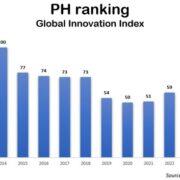As a result of the ongoing enhanced community quarantine (ECQ) in many parts of the Philippines, digital payment platforms have shown a significant rise in consumer usage. Data from the Bangko Sentral ng Pilipinas’ (BSP) indicate that transactions using PESONet and InstaPay tremendously increased as compared to data prior to the ECQ—a direct result of the restrictions in place or better put as physical distancing.
InstaPay and PESONet are real-time electronic payment systems under the National Retail Payment System (NRPS). “To efficiently and safely make payments, the business entities with obligations to pay during this period used EFT (electronic fund transfer) services, particularly, the PESONet,” a central bank bulletin showed.
InstaPay provides consumers with a safe, affordable, and real-time electronic payment option for up to PHP50,000 per transaction which is without limit in a day.
Depending on the financial institutions the customer opts to use, charges may apply for customers sending the funds and for the recepients.
PESONet, on the other hand, is a batch EFT credit payment scheme for business-to-business as well as people-to-business transactions such as credit salaries to employees’ existing accounts.
Before the instalment of the ECQ in the Philippines, the daily transactional value of PESONet amounted to roughly PHP6 billion. However, since March 17 until April 2, 2020, this value has been already surpassed.
The volume of InstaPay transactions have also been generally higher during the ECQ. Somedays however, the daily value was lower when compared to data before the quarantine period.
“The PESONet volume did not grow along with the PESONet value due to the adverse economic impact of the ECQ on salaried individuals who are also users of PESONet,” the BSP bulletin said.
Cheque payments and automated teller machines (ATMs) withdrawals underwent a decline in transactions as a result of the ECQ. From March 17 until April 2 value of daily cheque transactions surpassed PHP150 billion, but averaged to about PHP50 billion to PHP75 billion. From March 2 to March 16, the minimum daily value of ATM withdrawals was about PHP3 billion—with the highest value reaching nearly PHP9 billion.
From March 17 to April 2, the daily transactions was about PHP3 billion to PHP4 billion—with the highest reaching around PHP5 billion.
The bulletin also said that because of lower business transactions during the ECQ, cheques substantially declined in volume and value. ATM withdrawals were also down—signifying the negative effect that the work suspension has had on the millions of workers in the country.
The bulletin added that customers were more inclined to use the InstaPay service since it is convenient and safer to make low-value payments.
“Instead of heavily relying on ATMs, many depositors resorted to using InstaPay. The behavior-changing quarantine sustained the upward trend in InstaPay volume and value,” it said.
Further, ATM withdrawals and InstaPay demonstrate similar characteristics. The volume and value of transactions jump on a pay day and Fridays when people anticipate weekend expenses, it said.
Volume and value of transactions are high on weekdays more so than on weekends since work, household, and other expenses are largely funded on weekdays and household expenses happen on weekends.
On Wednesday, April 22, BSP Governor Benjamin Diokno urged people to avail of e-payment platforms during the ECQ to assist in the government’s fight in warding off the spread of the COVID-19 pandemic. “Fees for these services have been waived by authorized financial institutions during the ECQ period,” noted Diokno.
As of end-March this year, as per BSP, there are now 45 financial institutions that offer InstaPay service whereas 56 financial institutions provide PESONet service.
BSP aims to increase the value of e-payment transactions in the country to account for 30% of the total by 2020. And volume is aimed to account for 20% of the country’s total transactions.
For the Philippines, the quarantine was initially supposed to only last until April 12, but has now been recently extended to May 15 in order to ensure that all of the progress of trying to “flatten the curve” would not be made useless.






